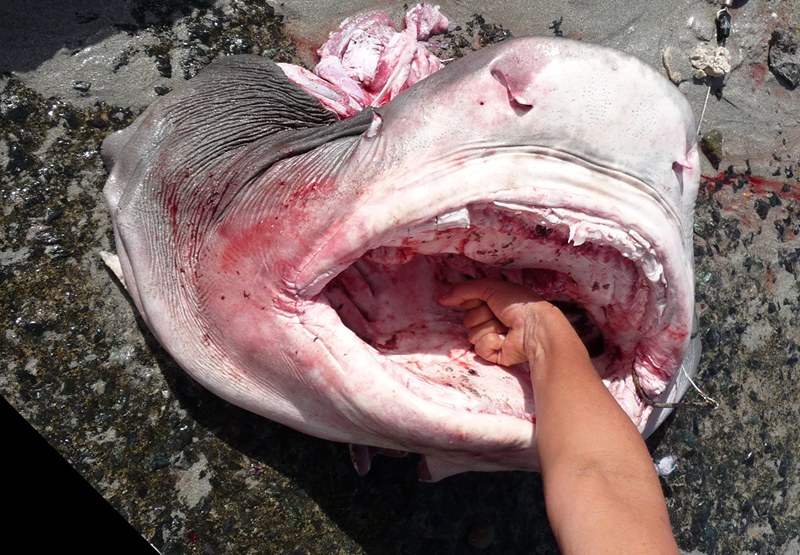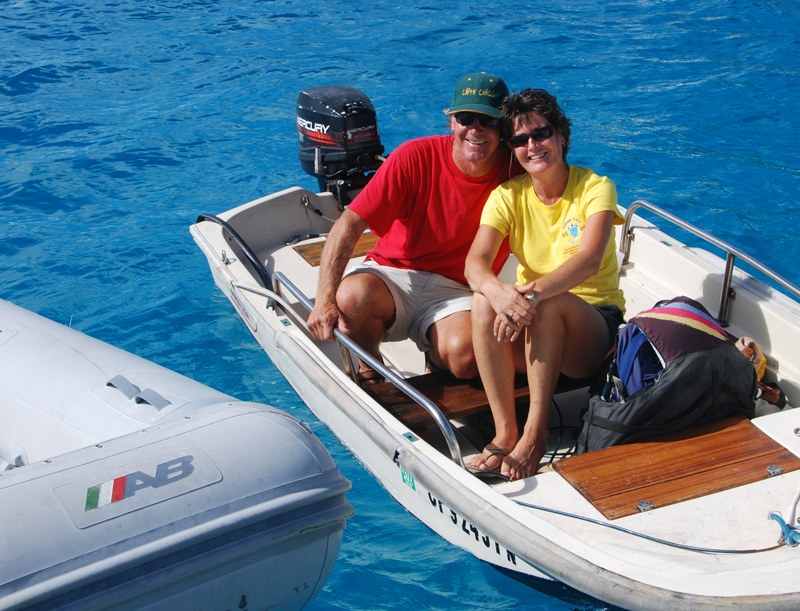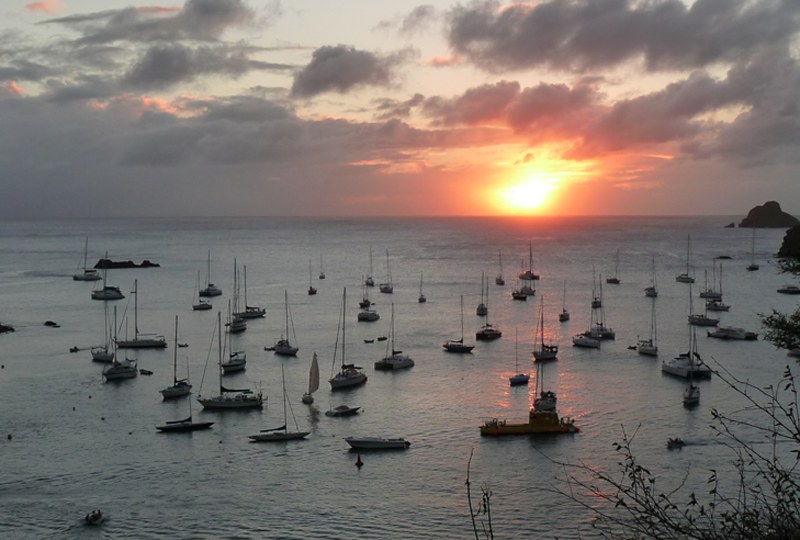
When the Shark Bites . . .

© Latitude 38 Media, LLC
"They’re cutting up a 10-ft tiger shark at Corossol," was the report that came through the Bar de ‘Oubli — Bar of the Forgotten — in Gustavia, St. Barth, French West Indies. Since we’d anchored our Leopard 45 cat ‘ti Profligate off the tiny village of Corossol, and since we often swam in the little bay there, we decided that we should check it out.
Tiger sharks are the second largest predatory sharks after the great whites. They are known for enjoying a varied diet, including fish, seals, birds, smaller sharks, squid, turtles, dolphins — and even man-made waste such as license plates and bits of tires. No wonder they are sometimes referred to as "the wastebasket of the sea." Tiger sharks are also notorious for attacks on swimmers, divers and surfers in Hawaii. Some studies suggest that the same tiger shark will return to the same beach at the same time of year to attack humans.
When we got to Corossol, all that was left was the shark’s head, minus its many rows of razor sharp teeth. According to the translation of the French-speaking fishermen, the shark had been about 10 feet long, weighed about 400 lbs, and had put up a heck of a fight. Yeah, but did they catch it in the little bay or further out to sea? The best answer we could get was that they’d caught it after motoring west of the island at high speed for about 40 minutes. The fishermen said that it’s not uncommon to come across tiger sharks, but they’re only found close to shore when the mothers are giving birth. Somewhat reassured, we nontheless checked the water carefully for dark shadows before we jumped off our cat to go swimming later that day.

©2009 Latitude 38 Media, LLC
As we were comtemplating making the dive off our cat, who came by but ’05 Ha-Ha vets Ken and Dottie Saville of the Big Bear-based Dreamweaver, a Savega 41 trawler they’d built themselves. They reported that they’d been out five years, having done a year in the Pacific Northwest prior to doing the ’05 Ha-Ha. We were rather impressed when they told us that they’d made it from Panama to the Eastern Caribbean with their boat, which is powered by a single fuel-sipping four-cylinder diesel. That can be a wicked eastward passage across the Caribbean in even the largest of boats — such as the 289-ft Maltese Falcon. It helped that the Savilles made the passage in the fall between hurricanes, when the wind and seas are usually the most mellow. Dottie says that while cruising isn’t quite as fascinating as it was their first couple of years out, they still love it. In fact, they were thinking they might have to go back to work for a while in order to keep enjoying the lifestyle.

© Latitude 38 Media, LLC
In an early January ‘Lectronic, we mentioned there was the threat of a new French Revolution here in St. Barth as a result of dramatic increases in fees for boats. In the case of our 45-ft cat, it would cost an astounding $900 a month, and that just to anchor out! In the case of a 130-ft motoryacht stern-tied at the dock, it would be $10,000 a month. But after a series of meetings, led by Fafoo, a most dynamic female French cruiser who would no doubt have been manning the barricades during the great French Revolution, the price increases have been suspended. In fact, it looks as though they will be greatly reduced. While we can’t confirm it, the rumors are that it will only cost us $300 a month to anchor out. But that’s not good enough for Fafoo, who is fighting for a principle. She says the charges to anchor out are unconstitutional, and she’s raising money to have the matter adjucated in Paris. Vive la révolution!
